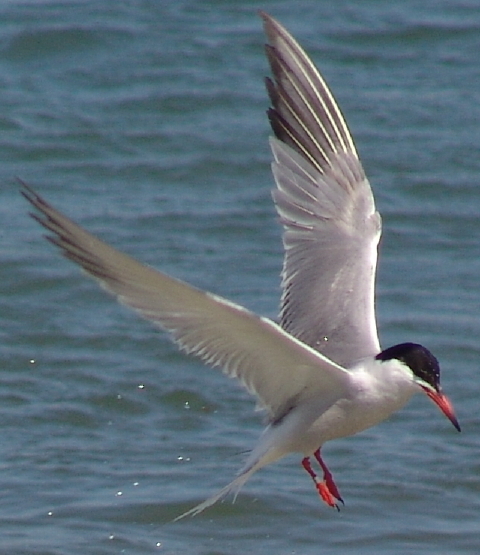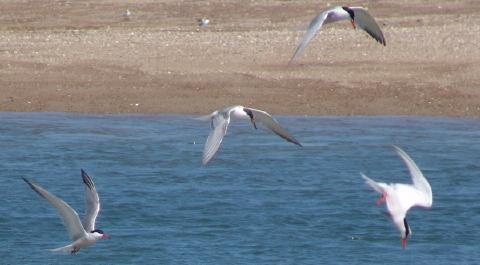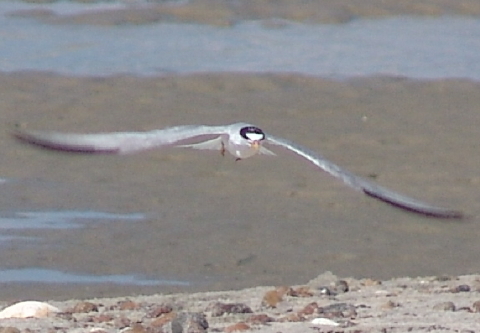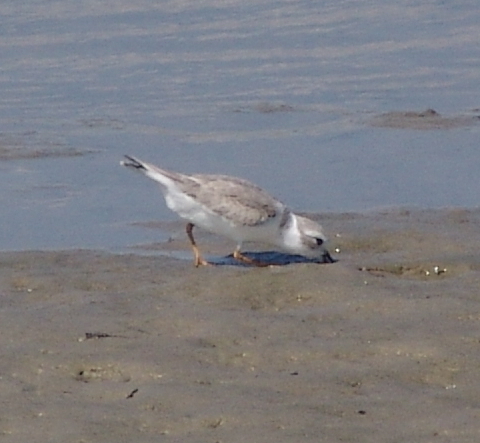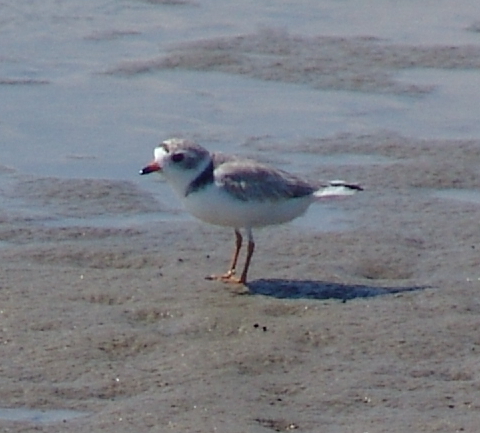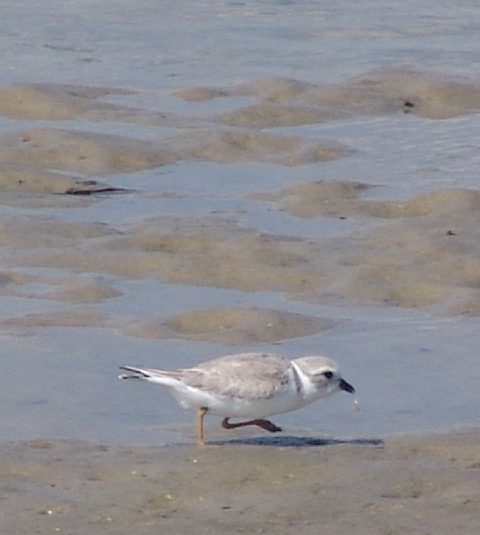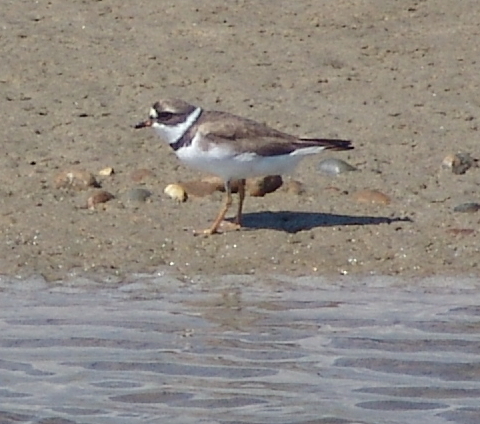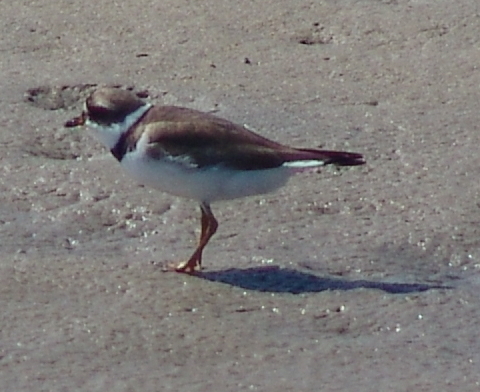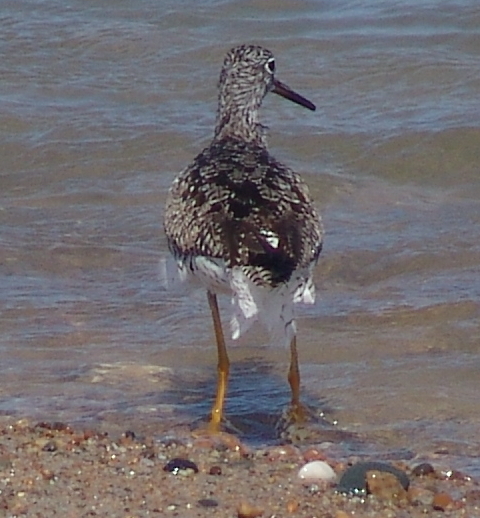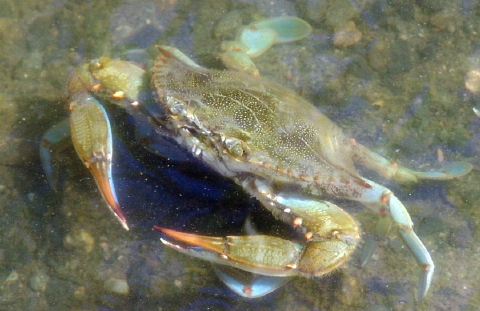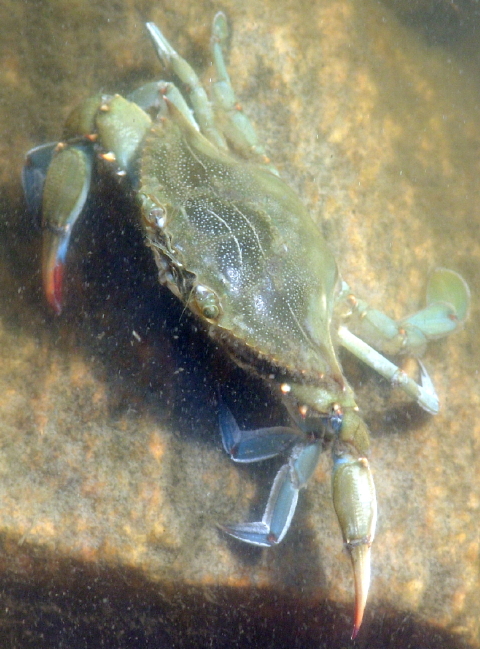Common Tern Foraging in Allens Pond
Turtle Journal explored Mass Audubon’s Allens Pond Wildlife Sanctuary in Westport this week. We hadn’t visited the sanctuary since March 21st when we discovered piping plovers who had just returned to Buzzards Bay for spring nesting. See “They’re Back!!†— Piping Plover Pair Sighted on Buzzards Bay Shore. Our aim was to search for signs of diamondback terrapin nesting in the sandy dunes abutting the pond, but instead we spent most of our time enjoying the wonderful shorebirds that are protected at this sanctuary.
Common Tern (Sterna hirundo)Â Foraging Frenzy
As we reached the stream that connects Allens Pond to Buzzards Bay, we encountered dozens of Common Terns (Sterna hirundo) diving into the ebbing waters to snatch minnows streaming out with the receding tide. While their name is “common,” Common Terns are rare enough to be protected in Massachusetts as a species of special concern.
Common Terns Diving on Fish
The tidal current gushed into the bay, carrying millions of small bait fish with it. We were hypnotized watching terns in their aerial ballet, hovering over the stream, taking careful aim at the center of the fish mass, and then plunging into the fast moving current.
Least Tern Glides over Allen’s Pond Barrier Dune
In the still waters behind the barrier dune we found pairs of Least Terns (Sternula antillarum). Like the Common Tern, Least Terns are listed as a protected species in Massachusetts within the category of species of special concern.
Least Tern Surveys Nesting Exclosure Area
A very large nesting exclosure area has been marked by Mass Audubon with symbolic fencing to protect terns and plovers. Fencing emcompasses several acres of barrier beach walling off Allen’s Pond from Buzzards Bay.
Piping Plovers Forage behind the Barrier Beach
Protected by the barrier beach from the sometimes turbulent Buzzards Bay, piping plovers forage in the shallow, calm water undisturbed by frenetic terns or equally frantic human beach goers desperately seeking that one perfect spot to spread their beach blankets in summer seclusion (sic).
Piping Plover Savoring a Perfect Summer Day
The piping plover (Charadrius melodus) enjoys both federal and state protection as a threatened species, and this largely secluded area of the Allens Pond offers a wonderful sanctuary for these tiny, pint-sized critters.
Piping Plover Foraging in Shallow Tidal Pool
The Turtle Journal team enjoyed a few moments watching as plovers crisscrossed the peaceful tidal pool looking for food. To our eyes, they seemed a great deal more at ease than when we first saw these birds in March at the end of a long springtime migration.
Semipalmated Plover (Charadrius semipalmatus)
We were delighted to find semipalmated plovers foraging the same tidal pool as the piping plovers at Allens Pond. According to Massachusetts Natural Heritage and Endangered Species Program, “The Semipalmated Plover does not breed in Massachusetts but is present on sandy beaches and intertidal flats from late July to early September during its southward migration.”Â
Semipalmated Plover Foraging at Allens Pond
To us, the semipalmated plovers appeared a tad larger than the piping plovers, yet equally hungry and intent on getting the most nutrients from these rich tidal flats.
Greater Yellowlegs (Tringa melanoleuca)
No trip to the shoreline would be complete without spotting a greater yellowlegs. This one decided to join the Common Terns working the bait fish stream flooding out of Allens Pond with the ebbing tide. While the terms dive bombed the fish from the air, the yellowlegs waded by the edge of the stream and scooped up stray fish that scattered shoreward during the tern attacks.
Blue Crab (Callinectes sapidus) in Allens Pond Stream
The small salt marsh stream that flows through culverts under the Allens Pond dirt road hosts a nice population of blue crabs.  Individual crabs seem a bit undersized from my Chesapeake Bay days, but they are healthy, active and … as always … feisty.
 Watching Blue Crabs in Allens Pond Stream
Beyond seering flashbacks of steaming crabs dumped on our table at the Crab Claw in St. Michaels, Maryland, the evening air so thick with the smell of Old Bay seasoning that even cold beer tasted like sparkling Chesapeake water; beyond those faraway, long ago memories, the dance of blue crabs through the murky shallows of Allens Pond brought our day of discovery to a perfect close.Â
Blue Crab Gives Rise to Thoughts of Seafood Dinner
I guess it must have been the flashback to the Crab Claw, because after quick good-byes to the sanctuary director, we sped away from Allens Pond to the nearby Back Eddy Restaurant in Westport for an outdoor seafood feast. Now, that’s a perfect close to a perfect day!
